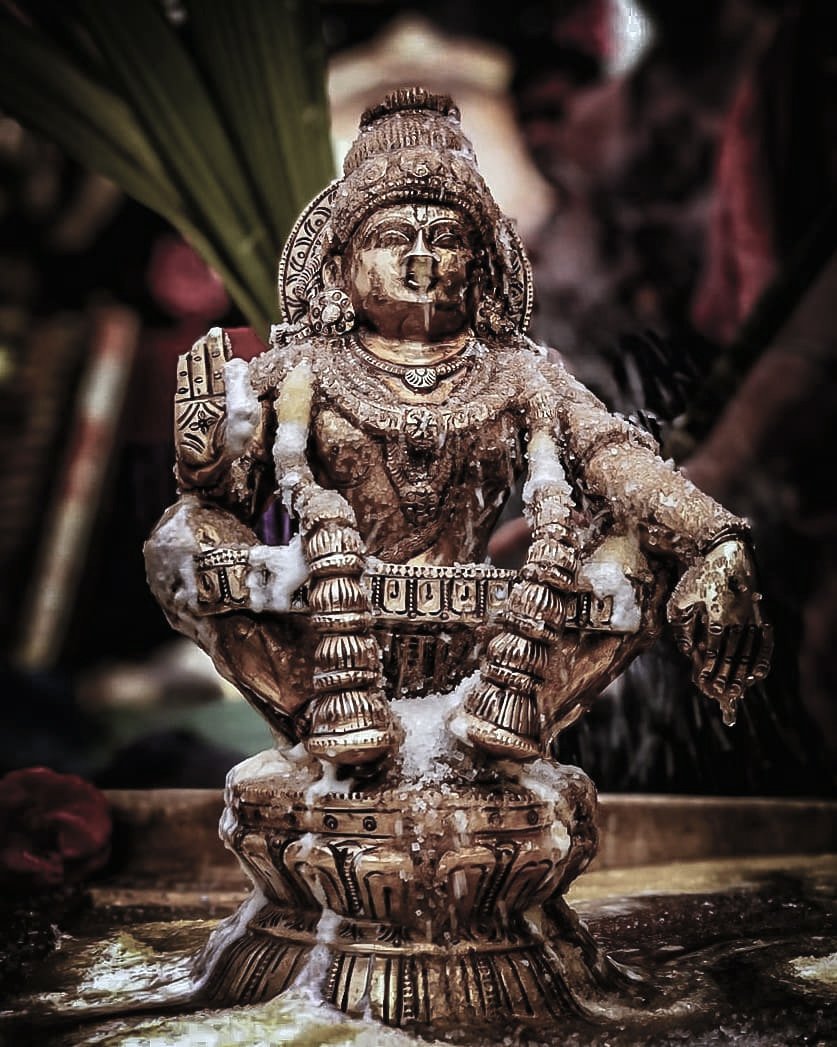- 02836-230205
- info@ayyappagandhidham-org-285065.hostingersite.com
Method of Pilgrimage
A TRUE DEVOTEE WOULD HAVE TO ADHERE TO A STRICT RELIGIOUS CODE TO BE ABLE TO RECEIVE LORD AYYAPPA'S BLESSINGS.
Although the temple is open every day, the Darshan (Worship) has special significance during the 41-days of Mandala period (December-January) Malayalam months between the 1st day of Vrischika month and upto the 11th day of the month of Dhanu) as well as the Makaravilakk in January is very important of every Ayyappa Temples. Special Poojas and araties are performed in this period.
If you are a sincere Lord Ayyappa devotee and perform all the rigors that come with it. You are sure to gain on several fronts as individuals and your entire familes. Devotee will be blessed with good health, sucess and prosperity. Lord Ayyappa is well-known for his unique abilities to regulate the malefic effects of the Shani (Saturn Planet). Worshipping him can help in reducing or eliminating any hardship due to hostile placement of the planet, signified by challenging times like Saturn in the 8th house of the birth chart. Saturn affection is seven and a half year period.
Neyyabhishekam
This significant ritual involves pouring sacred ghee brought by pilgrims in their Pallikettu or Irumudi (a two compartment bag made of handwoven cotton cloth used to carry the offerings for the Temple carried on their heads) on the idol of Lord Ayyappa. It symbolically means the merging of Jeevatma with the Paramatma. While a red-colored irumudi is used by a pilgrim on his first journey as a Kanni Ayyappan to the temple, others use navy blue till third year and thereafter saffron colored irumudi.
Makara Vilakku
Lord Rama and his brother Lakshmana met Sabari, a tribal devotee, at Sabarimala. Sabari offered the Lord fruits after tasting them. But the Lord accepted them gladly and whole-heartedly. The Lord then saw a divine person doing tapasya. He asked Sabari who it was. Sabari said it was Shasta. Rama walked towards him. Shasta stood up and welcomed the Prince of Ayodhya. The anniversary of this incident is celebrated on Makara Vilakku day. It is believed that on Makara Vilakku day, Ayyappan stops his penance to bless his devotees. The day is also called Makar Sankranti.
Makara Jyothi
This is the star that appear at the moment of Makar Sankranti before the holy arati and the lighting of the Makaravilakku at Ponnambalamedu. It is the custom that after seeing the Makarajyoti star, the lighting of the Makaravilakku shall begin.
Thatthwamasi
The most important message written at the temple facade is one of the four Mahāvākyas of Advaita or the non-dualistic school of philosophy. Tat Tvam Asi, the 3rd of four Mahavakyas which in sanskrit translates to "Thou Art That" is the principal philosophy that governs the temple and pilgrimage. As the pilgrimage is symbolic for the journey to self-realization that all living beings possess the essence of Brahman, pilgrims refer to each other as Swami, acknowledging their divinity.
The oneness of jIva and Ishvara is described by enquiry into the inner meaning of the statement ‘tat tvam asi’ indicate, "Tat" refers to Ishvara, the Lord - the word Ishvara has a literal and an implied meaning; The literal meaning of ‘Ishvara’ is ‘Satyam-Brahman together with Mithya-Maaya’; The implied meaning of Ishvara is pure Brahman devoid of the superimposition of Maaya; "Tvam" refers to the Jeeva, the individual; The literal meaning of ‘Jeeva’ is ‘Atmaa identified with Mithya gross and subtle bodies’; The implied meaning is pure consciousness-Aatma without Mithya gross and subtle bodies; In Advaita Aatma and Brahman are different names of the one Reality; Thus, Jeeva and Ishvara are Absolutely non-different in reality, and only relatively different because of the superimposed names and forms through which the one Reality is experienced.

